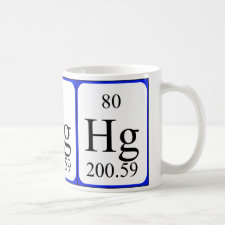
Authors: Andaç M, Mirel S, Senel S, Say R, Ersöz A, Denizli A
Article Title: Ion-imprinted beads for molecular recognition based mercury removal from human serum.
Publication date: 2007
Journal: International Journal of Biological Macromolecules
Volume: 40
Issue: (2)
Page numbers: 159-166.
DOI: 10.1016/j.ijbiomac.2006.07.002
Alternative URL: http://www.sciencedirect.com/science/article/B6T7J-4KDJVS9-1/2/3e9805f7aee1d742d5c47dd951a7433e
Abstract: The aim of this study is to prepare ion-imprinted polymers which can be used for the selective removal of mercury ions [Hg2+] from human serum. N-Methacryloyl-(l)-cysteine (MAC) was chosen as the complexing monomer. In the first step, Hg2+ was complexed with MAC and the Hg2+-imprinted poly(hydroxyethyl methacrylate-N-methacryloyl-(l)-cysteine) (MIP) beads were synthesized by suspension polymerization. After that, the template ions (i.e., Hg2+) were removed using thiourea (0.5%, v/v) in 0.05 M HCl. The specific surface area of the MIP beads was found to be 59.04 m2/g with a size range of 63-140 μm in diameter and the swelling ratio was 91.5%. According to the elemental analysis results, the MIP beads contained 87.0 μmol MAC/g polymer. The maximum adsorption capacity was 0.45 mg Hg2+/g beads. The applicability of two kinetic models including pseudo-first order and pseudo-second order model was estimated on the basis of comparative analysis of the corresponding rate parameters, equilibrium capacity and correlation coefficients. Results suggest that chemisorption processes could be the rate-limiting step in the adsorption process. The relative selectivity coefficients of MIP beads for Hg2+/Cd2+, Hg2+/Zn2+ were 14.7 and 21.5 times greater than the non-imprinted (NIP) matrix, respectively. The MIP beads could be used many times without decreasing in their adsorption capacities significantly
Template and target information: mercury ion, Hg(II)
Author keywords: molecular imprinting, molecular recognition, Mercury removal, metal detoxification, affinity binding



Join the Society for Molecular Imprinting

New items RSS feed
Sign-up for e-mail updates:
Choose between receiving an occasional newsletter or more frequent e-mail alerts.
Click here to go to the sign-up page.
Is your name elemental or peptidic? Enter your name and find out by clicking either of the buttons below!
Other products you may like:
 MIPdatabase
MIPdatabase









